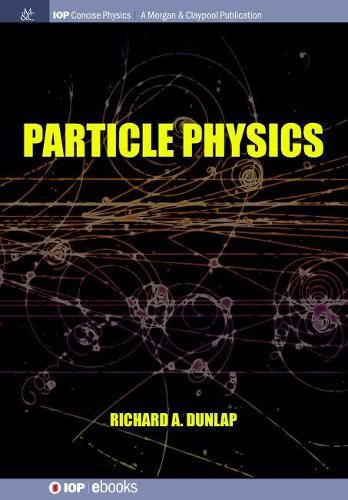Readings Newsletter
Become a Readings Member to make your shopping experience even easier.
Sign in or sign up for free!
You’re not far away from qualifying for FREE standard shipping within Australia
You’ve qualified for FREE standard shipping within Australia
The cart is loading…






This title is printed to order. This book may have been self-published. If so, we cannot guarantee the quality of the content. In the main most books will have gone through the editing process however some may not. We therefore suggest that you be aware of this before ordering this book. If in doubt check either the author or publisher’s details as we are unable to accept any returns unless they are faulty. Please contact us if you have any questions.
Our understanding of subatomic particles developed over many years, although a clear picture of the different particles, their interactions and their inter-relationships only emerged in the latter part of the twentieth century. The first subatomic particles to be investigated were those which exhibit readily observable macroscopic behavior, specifically these are the photon, which we observe as light and the electron, which is manifested as electricity. The true nature of these particles, however, only became clear within the last century or so. The development of the Standard Model provided clarification of the way in which various particles, specifically the hadrons, relate to one another and the way in which their properties are determined by their structure. The final piece, perhaps, of the final model, that is the means by which some particles acquire mass, has just recently been clarified with the observation of the Higgs boson.
Since the 1970s it has been known that the measured solar neutrino flux was inconsistent with the flux predicted by solar models. The existence of neutrinos with mass would allow for neutrino flavor oscillations and would provide an explanation for this discrepancy. Only in the past few years, has there been clear experimental evidence that neutrinos have mass.
The description of particle structure on the basis of the Standard Model, along with recent discoveries concerning neutrino properties, provides us with a comprehensive picture of the properties of subatomic particles. Part I of the present book provides an overview of the Standard Model of particle physics including an overview of the discovery and properties of the Higgs boson. Part II of the book summarizes the important investigations into the physics of neutrinos and provides an overview of the interpretation of these studies.
$9.00 standard shipping within Australia
FREE standard shipping within Australia for orders over $100.00
Express & International shipping calculated at checkout
This title is printed to order. This book may have been self-published. If so, we cannot guarantee the quality of the content. In the main most books will have gone through the editing process however some may not. We therefore suggest that you be aware of this before ordering this book. If in doubt check either the author or publisher’s details as we are unable to accept any returns unless they are faulty. Please contact us if you have any questions.
Our understanding of subatomic particles developed over many years, although a clear picture of the different particles, their interactions and their inter-relationships only emerged in the latter part of the twentieth century. The first subatomic particles to be investigated were those which exhibit readily observable macroscopic behavior, specifically these are the photon, which we observe as light and the electron, which is manifested as electricity. The true nature of these particles, however, only became clear within the last century or so. The development of the Standard Model provided clarification of the way in which various particles, specifically the hadrons, relate to one another and the way in which their properties are determined by their structure. The final piece, perhaps, of the final model, that is the means by which some particles acquire mass, has just recently been clarified with the observation of the Higgs boson.
Since the 1970s it has been known that the measured solar neutrino flux was inconsistent with the flux predicted by solar models. The existence of neutrinos with mass would allow for neutrino flavor oscillations and would provide an explanation for this discrepancy. Only in the past few years, has there been clear experimental evidence that neutrinos have mass.
The description of particle structure on the basis of the Standard Model, along with recent discoveries concerning neutrino properties, provides us with a comprehensive picture of the properties of subatomic particles. Part I of the present book provides an overview of the Standard Model of particle physics including an overview of the discovery and properties of the Higgs boson. Part II of the book summarizes the important investigations into the physics of neutrinos and provides an overview of the interpretation of these studies.